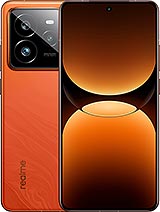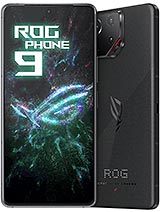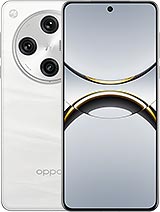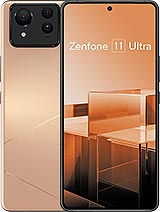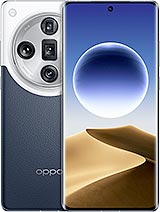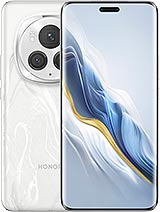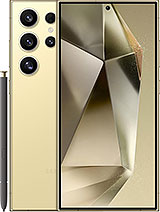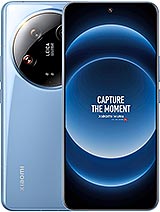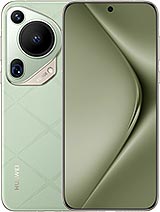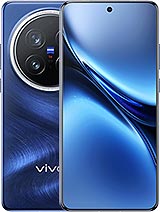Oppo Find X8 Pro review

6.78-inch OLED display leaves little to be desired
The Find X8 Pro is equipped with an 6.78-inch LTPO OLED display. It has a 1264x2780px resolution in a 19.8:9 ratio (or 2.2:1) with a pixel density of 450ppi. The refresh rate is dynamically adjustable in the 1-120Hz range, there's 2160Hz PWM dimming below 70nits and DC dimming above that brightness.

Speaking of brightness, Oppo says the panel should be capable of up to 1,600nits in high brightness mode and up to 4,500nits of local peaks in HDR applications. In our testing, we couldn't quite get these numbers - we measured a rather conservative 1,333nits when the auto brightness was left in charge while the phone was in bright ambient conditions. The Realme GT 7 Pro we reviewed recently, for example, was good for a full 1,000nits more in the same test, and we routinely get numbers above 1,800nits these days. We're not saying that 1,300 isn't enough, just that the Oppo isn't really on the forefront of the brightness race.
That said, the 900-ish nits you can get manually is more of an excellent result - there are higher figures here too, but the Find is in the upper echelon.
Refresh rate
The Find X8 Pro's refresh rate implementation allows it to switch between various modes in the 1Hz to 120Hz range. It will base it on the usual combination of content, user interaction, and brightness - we didn't experience it to be dependent on ambient light (directly, that is - if you're in auto brightness mode, a dim environment will result in lower brightness and thus potentially higher refresh rate). In normal conditions, we observe it readily dialing down to 1Hz for idle states.

We're still finding trouble with getting games to run above 60fps on Color OS, including here on the Find X8 Pro - all the titles we tried got a 60Hz/60fps cap.
Streaming and HDR
The Find X8 Pro supports all major HDR standards including HDR10+ and Dolby Vision. Netflix was happy to serve both HDR10 and Dolby Vision video (depending on title), and we also got HDR streams in YouTube. The Widevine L1 certification means you get high-res playback of DRM protected content too.

By now, it should be the default behavior, but we still like to point it out that the Find X8 Pro supports the Android Ultra HDR standard for displaying HDR photos with enhanced tone mapping and a brightness boost for highlights. It's implemented in the in-house Photos gallery, where you get a button to turn it off on a photo-by-photo basis for comparison, in addition to being able to switch it off globally in settings. It also works in Google Photos (where you don't get the temporary preview button), and in Chrome - for images from other compliant phones, too.
Oppo Find X8 Pro battery life
The Find X8 Pro uses a silicon carbon battery with a 5,910mAh capacity - a significant upgrade over the Find X7 generation where both vanilla and Ultra used 5,000mAh cells. Oppo doesn't make a big deal out of the battery's performance in cold weather, but it should be inherent with the SiC anode tech.
In our testing, the Find X8 Pro returned very good results for endurance in our Active Use test. We clocked 10 and a half hours in our gaming test, nearly 18 hours of video playback, and almost 14 hours of web browsing - solid autonomy with the screen on. The voice call result was more in the so-so department, but we tend not to overemphasize its importance, plus its better than the vivo we had recently with this chipset, so you could call it a win.
Our new Active Use Score is an estimate of how long the battery will last if you use the device with a mix of all four test activities. You can adjust the calculation based on your usage pattern using the sliders below. You can read about our current battery life testing procedure here. For a comprehensive list of all tested devices so far, head this way.
Charging speed
The Find X8 Pro's specsheet lists an 80W charging capability and that's also what the adapter in the bundle that we got is specced for. In our testing, it maxed at 72W at the very start of the charging process (from an empty battery) and quickly tapered off to lower power values - a common behavior that's gotten all the more noticeable with the silicon carbon batteries we've been getting as of late.

Charging speed is... moderate for a fast charging system - we clocked an empty-to-full time of 53 minutes and we were looking at 70% in the battery indicator at the half-hour checkpoint. The vivo X200 Pro was ever so slightly quicker, and the Realme GT 7 Pro had a more pronounced advantage, despite having a larger capacity.
That said, we should probably start adjusting expectations going forward - the sub-20 minute charging times we got from dual-cell graphite anode batteries of yesteryear are probably not happening again with the push for higher energy density batteries. It's probably not the worst of tradeoffs, though.
The charging speeds above are for the proprietary charger that comes in the box in some markets. But since EU-destinerd Finds will ship without an adapter, the phone also supports regular USB Power Delivery at up to 55W - or so Oppo says. In our experience with half a dozen other makers' and aftermarket PD adapters we only got up to 26W. The total charging time was around 62 minutes and we got 55% in half an hour so there is the number 55 somewhere in the whole PD charging thing. Overall, it's not too bad, particularly in comparison to the proprietary charger.
The X8 Pro also supports wireless charging at up to 50W when using an in-house AirVOOC pad. Reverse wireless charging is also on the menu, at up to 10W.
Color OS has a reasonable set of battery saver and battery health options. It has the Smart charging toggle that attempts to learn your charging habits and does the final top off just before it predicts you'll be needing the phone. It also has the option to limit the charge to 80% when it detects you've got the phone plugged in for prolonged amounts of time. You can also turn off the Smart rapid charging and have the Find X8 Pro charge slower than its maximum capability - the difference was minimal in our experience.
Speaker test
The Find X8 Pro employs a hybrid speaker system with one bottom-firing unit and another one above the display that directs sound towards the front and serves as an earpiece for voice calls. As Oppo normally goes about this, both speakers will also output the opposite channel's track at a lower volume, in addition to their own. The channels are otherwise assigned based on the phone's orientation when in landscape, while the top speaker gets the left channel when the handset is held vertically.


Bottom speaker • Top speaker/earpiece
The Find X8 Pro got a 'Very Good' rating for loudness in our test - on par with last year's Ultra and pretty much any potential competitor. We'd say the X8 Pro is an improvement over the X7 Ultra, and it's also livelier and more dynamic than the X200 Pro. It's no iPhone 16 Pro Max though, and the Galaxy S24 Ultra is possibly better too.
Use the Playback controls to listen to the phone sample recordings (best use headphones). We measure the average loudness of the speakers in LUFS. A lower absolute value means a louder sound. A look at the frequency response chart will tell you how far off the ideal "0db" flat line is the reproduction of the bass, treble, and mid frequencies. You can add more phones to compare how they differ. The scores and ratings are not comparable with our older loudspeaker test. Learn more about how we test here.
Reader comments
- Mobilemaster
- 28 Mar 2025
- 0C9
Hi there! I have bought the phone almost 2 weeks ago. My overall opinion of the phone is very positive. I love the big battery, it has a much better battery life than any other Pixel phone for example. The charging speed is also OK( I have bought the...
- Anonymous
- 12 Mar 2025
- nBh
Just another thief company who steals charger from the box. I may think to buy it if its drops to below 500 euros.
